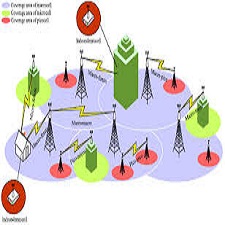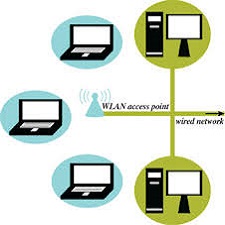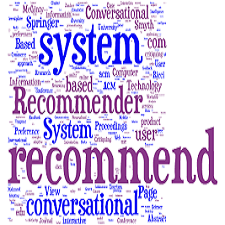توضیحات
ABSTRACT
Product and process quality was and still is a key factor of success for manufacturing companies in the competitive global business environment. The stage gate model represents a well-established method for quality management in the product development domain. This paper discusses the application of the stage gate model in the domain of production. The two domains differ in certain areas, which has to be reflected by the adapted stage gate model. The preliminary findings of the two case studies, covering manufacturing and assembly processes, indicate that an adapted stage gate model may provide valuable support for product and process quality improvement. However, the success is strongly dependent of the right adaptation, taking the individual requirements, limitations and boundaries into consideration .
INTRODUCTION
Manufacturing systems are becoming increasingly complex and with this development the challenges towards information management increase. With each step along the manufacturing programme, the potential costs of quality problems namely rework or scrap increase. Today, the technological development, especially in sensor technology, allows for measuring a large amount of data during the manufacturing process. Common tools utilized in intelligent manufacturing systems like process monitoring, diagnostics and control, made large progress in order to handle quality problems. Most of those models rely on the availability of relevant information and data of the product state along the process at the right time (use of data). There is a lot of research available on when the relevant information must be available during a production process. However, determining the right time (capturing of data) within the process to capture the relevant information is not yet sufficiently discussed by industry and academia. The stage gate model presents a well-established methodology to determine so called gates during a product and software development process, at which the state of a development process is matched against agreed parameters. In case the state does not match, the process cannot continue. Even though characteristics and requirements of production differ from product development, the question arises if applying such a model in that domain could be beneficial from a (product) quality perspective.
چکیده
کیفیت محصول و فرایند یک عامل کلیدی برای موفقیت شرکت های تولیدی در محیط کسب و کار جهانی رقابتی بوده و هنوز هم هست. مدل gateway stage نشان دهنده روش خوبی برای مدیریت کیفیت در حوزه توسعه محصول است. در این مقاله، استفاده از مدل گام مرحله ای در حوزه تولید مورد بحث قرار می گیرد. دو دامنه در مناطق خاص متفاوت است، که باید توسط مدل دروازه مرحله اقتباس شده منعکس شود. یافته های مقدماتی دو مطالعه موردی، شامل فرایندهای تولید و مونتاژ، نشان می دهد که یک مدل دروازه مرحله اقتباس می تواند پشتیبانی ارزشمندی را برای بهبود کیفیت محصولات و فرآیند ارائه دهد. با این حال، موفقیت به شدت وابسته به سازگاری درست است، در نظر گرفتن نیازهای فردی، محدودیت ها و مرزهاست.
مقدمه
سیستم های تولیدی در حال تبدیل شدن به طور فزاینده پیچیده و با این توسعه چالش ها در رابطه با مدیریت اطلاعات افزایش می یابد. با هر گام در راستای برنامه تولید، هزینه های احتمالی مشکلات کیفیت مانند بازده یا ضایعات افزایش می یابد. امروزه توسعه فن آوری، به ویژه در تکنولوژی سنسور، امکان اندازه گیری مقدار زیادی اطلاعات را در طی فرایند تولید فراهم می کند. ابزارهای معمولی که در سیستم های تولید هوشمند نظیر نظارت بر فرایند، تشخیص و کنترل استفاده می شوند، پیشرفت های بزرگی برای رسیدگی به مشکلات کیفیت انجام می دهند. اکثر این مدل ها در دسترس بودن اطلاعات مربوطه و داده های مربوط به محصول محصول در فرآیند در زمان مناسب (استفاده از داده ها) است. تحقیقات زیادی در مورد زمانی که اطلاعات مربوطه در طی یک فرایند تولید باید در دسترس باشد وجود دارد. با این حال، تعیین زمان مناسب (گرفتن اطلاعات) در فرایند برای گرفتن اطلاعات مربوطه هنوز به طور جامع توسط صنعت و دانشگاه مورد بحث نیست. مدل دروازه مرحله ای یک روش معتبر برای تعیین دروازه های به اصطلاح در فرآیند تولید محصول و نرم افزار ارائه می دهد که در آن وضعیت فرآیند توسعه با پارامتر های مورد توافق سازگار است. در صورت عدم هماهنگی با دولت، فرآیند نمی تواند ادامه یابد. اگرچه ویژگی ها و الزامات تولید با توسعه محصول متفاوت است، اما اگر چنین مدل هایی در آن زمینه بتوانند از یک دیدگاه کیفیت (محصول) بهره مند شوند، این سوال مطرح می شود.
Year: 2014
Publisher : ELSEVIER
By : Thorsten Wuest . Ang Liu , Stephen C.-Y. Lu , Klaus-Dieter Thoben
File Information: Persian Language/ 6 Page / size: 473 KB
Only site members can download free of charge after registering and adding to the cart
سال : 1393
ناشر : ELSEVIER
کاری از : Thorsten Wuest. آن لوو، استفان سی. ی. Lu، Klaus-Dieter Thoben
اطلاعات فایل : زبان فارسی / 6 صفحه / حجم : KB 473

![Application of the stage gate model in production supporting quality[taliem.ir]](https://taliem.ir/wp-content/uploads/Application-of-the-stage-gate-model-in-production-supporting-qualitytaliem.ir_.jpg)







![An analytical framework for handling production time variety at[taliem.ir]](https://taliem.ir/wp-content/uploads/An-analytical-framework-for-handling-production-time-variety-attaliem.ir_-150x150.jpg)
نقد و بررسیها
هنوز بررسیای ثبت نشده است.